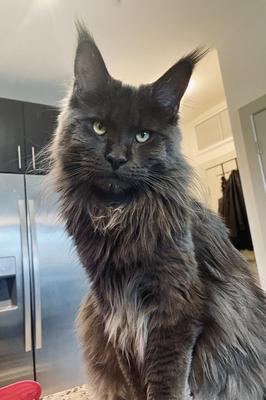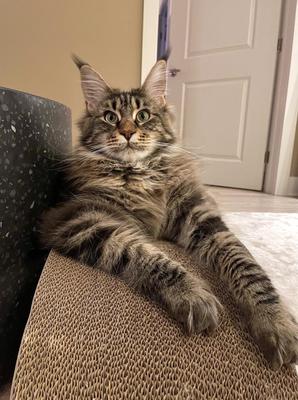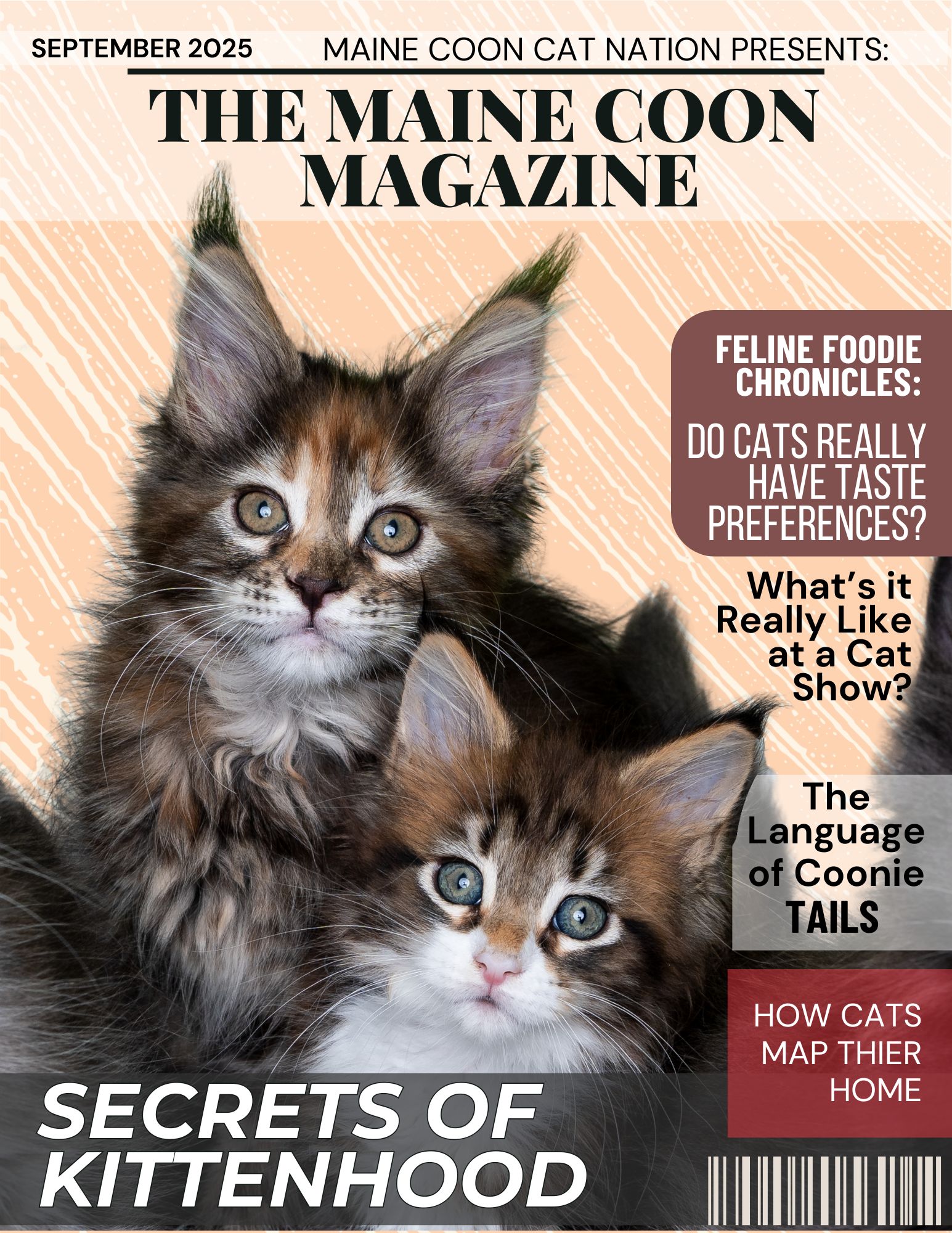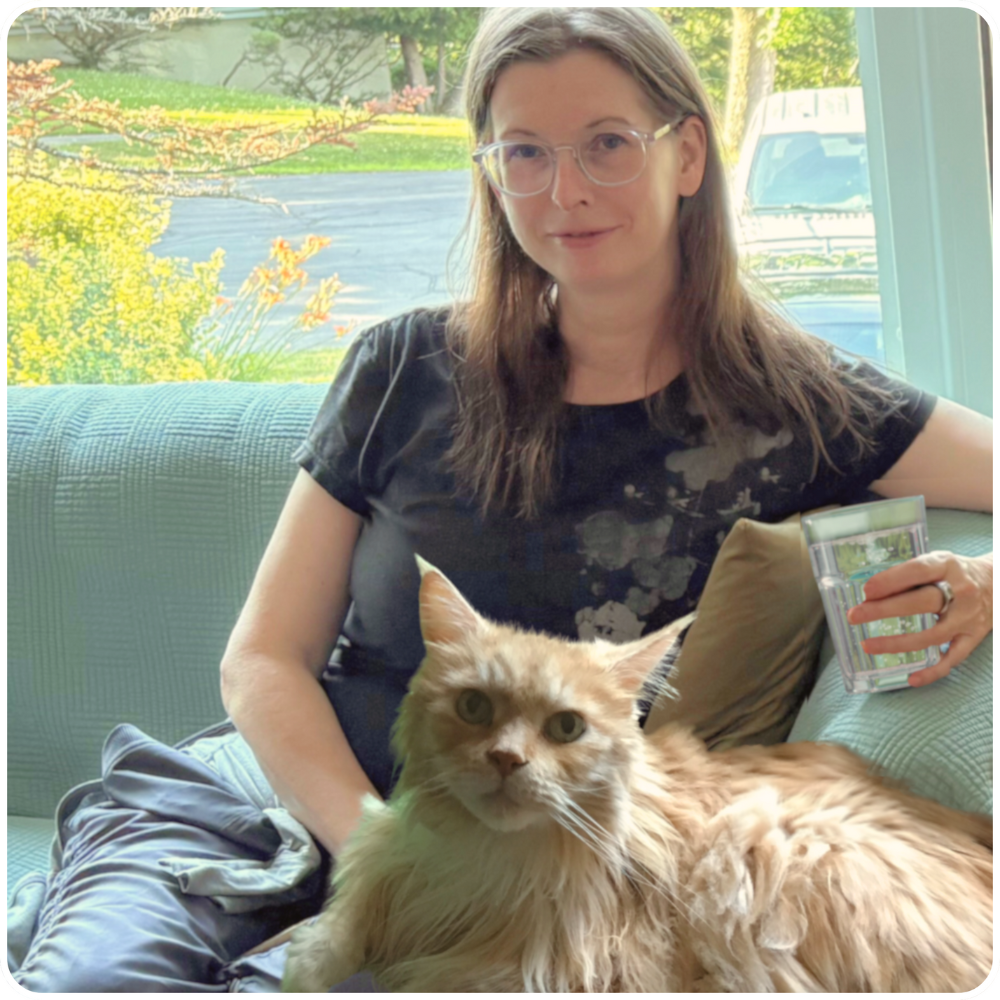- Home
- Behavior Problems
- Maine Coon Fighting
Disclosure: this site is reader-supported. When you buy through links on our site, we may earn a small commission, at no extra cost to you.
Dealing With Maine Coon Fighting Between Housemates
•
When Play Turns Into Fighting
Maine Coon fighting can be heartbreaking to watch, especially when it's between cats who once seemed inseparable.
It often happens as kittens grow into young adults and start sorting out boundaries and hierarchy.
This story from Natalie in San Jose shows how easily this can happen. Her two young females, both spayed, who adore their home and human, can't seem to get along.
Her experience shows how even well-bred cats can struggle once competition or stress enters the picture. Sometimes it just takes time to find harmony again at home.
At My Wit's End With Maine Coon Fighting
by Natalie in San Jose
I adopted my Maine Coon Dakota at 5 months of age. Several months later I adopted Emilie, who is 1 month younger than Dakota (Both are female and spayed). They are now both 1 year old now.
 Dakota
Dakota Emilie
EmilieI cannot let them with each other for just 5 minutes before they start fighting each other. At first, Emilie was so sweet and never fought. Dakota caused her to become more defensive and now she begins fights.
I hired a behaviourist online. They were very helpful, I started feeding them through puzzles only and separating them prior to fighting instead of noticing and then separating.
I play with them each night before bed and try to play throughout the day but I'm inconsistent. They suggested that I provide them with mental stimulation as well which is the one thing I have been bad about and haven't really done well with.
I am trying really hard. I love my Maine Coons so much and it breaks my heart seeing them like this with each other.
Thanks! :)
Nat
Comments:
Fighting Females
by: Pegg
Try getting them some plastic springs off of Amazon (check the reviews before buying).
They are trying to be the boss so they fight but maybe if they start chasing springs around the house they will leave each other alone.
I did this when our Maine Coon and our black cat didn't get along. The black cat started chasing them also and now they fight maybe once a week instead of 24/7
Reply to Viktor
by: Natalie
I'm not sure how to reply to posts...
Anyway, dear Viktor P Buser,
It breaks my heart reading your post. I didn't know that two females would be a bad thing. Why is that?
I can't even begin to explain how much it hurts to think about the possibility of finding one of them a new home.
When I moved out to California, I adoped my cats. And I came out here alone. They are the best thing in my life.
I hope you can see how I am conflicted. This is a huge inconvenience to me for them to fight. But I would go through anything for my Maine Coons. I just feel depressed thinking of the stress it causes them.
Thank you :)
Natalie
Females
by: Viktor
My good advise I can give you is to find a good home for one of the females... Only one female per household.
It's the nature of the animal world. I am talking about my life experience of dogs and cats during 60 years...
I wish you all the best, it will solve your problem! Viktor P Buser
Behind the Behavior
When young cats begin fighting, it's easy to think it means they'll never get along, but that's rarely true.
What's happening between Dakota and Emilie is something many multi-cat households go through once kittens mature.
Even after spaying, hormones, energy levels, and personality differences can still lead to tension.
Around a year of age, cats often re-establish who "owns" which spots and toys. It can look like pure aggression, but most of the time it's uncertainty or fear, not hatred.
Keeping play structured (as Natalie already does) and adding short, daily sessions that focus on each cat individually helps them burn energy without triggering rivalry.
Some behaviorists also suggest "co-feeding" at a distance by placing bowls or puzzle feeders in sight of each other but far enough apart that both cats can eat calmly.
Over time, it rebuilds positive associations. Rotating toys and switching up play spaces can also reduce boredom, one of the biggest triggers for redirected aggression.
It's important to note that rehoming a cat should always be a last resort.
Viktor's advice came from his personal experience, but most feline behavior experts agree that female cats can coexist peacefully.
Sometimes, like in this case, it requires extra time, structure, and enrichment. It's rarely about gender - it's about territory and trust.
In cases where fights seem intense, a temporary separation can help.
Give each cat her own space for a week or two, then reintroduce them slowly using scent swapping and short, supervised visits.
Progress may be slow, but with consistency, most pairs eventually learn to tolerate or even enjoy each other’s company again.
Natalie's patience and dedication are exactly what make a difference in the long run.
Her experience is a reminder that setbacks don't mean failure - they're part of the process of helping cats feel safe in a shared home.
This story and discussion were part of an earlier Q&A on Maine Coon behavior. It's now preserved as part of our community archive for your reference.
Often, the best way to figure out how to handle unique personal situations is to read the experiences of others!
Related:
Cat Bullying Other Cat: Lee in Florida asks about her 20lb girl, Binx, who is bullying her much smaller feline sibling.
Kitten Play Fighting: When is it Too Rough? Judith in Spain has 2 young Coonies who get pretty rough with each other, and she's concerned.
« Return to our Maine Coon Behavior Problems section for more insights on common challenges and solutions.

